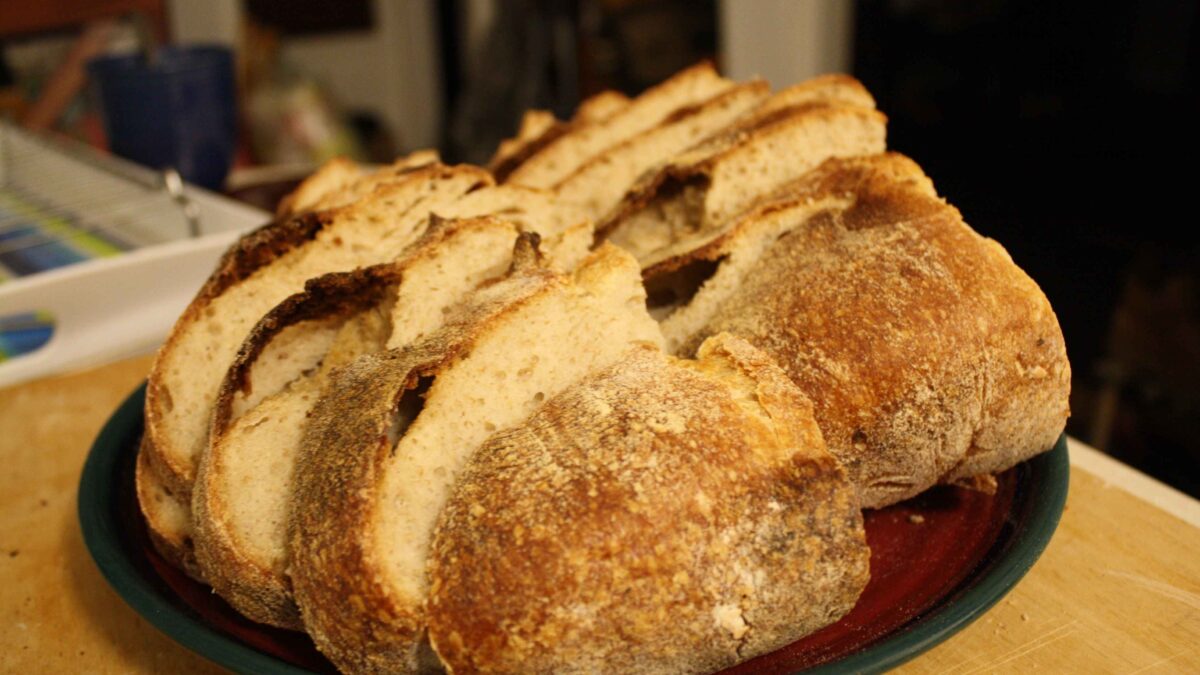During a period of pandemic lockdown in 2020, I was at home like many others. Scrolling mindlessly through Instagram, I found a lot of posts from others in lockdown about their adventures in baking: sandwich bread, artisan break, sourdough bread, sourdough starter and much more.
It was everywhere, and the bread looked like it came out of a bakery. It was a craze, to the point that flour was becoming a luxury to have, with much of it selling out quickly in stores.
With seemingly endless hours on my hands, and boredom closing in, I decided to venture into (for me) the uncharted territory of baking bread.
My first attempts were artisan bread with active yeast. The result was addicting. The bread was light and the crust was OK. It rose a little, although not quite achieving the signature “ear” many bakers hope for.
This is when my love for bread-baking began to bloom. The satisfaction of seeing a loaf of bread that I had made with my own hands was immense. The beauty of it was that the kneading time did not exceed 10 minutes, yet the loaf did a lot of its own work — rising for a long time before coming to rest.
It was initially quite a worrying trial. I looked at the oven every few minutes, hoping the bread would rise to create a perfectly light, fluffy loaf. When it came out, I was worried it would be too heavy and dense. It was a little on the denser side, but it had risen fairly well.
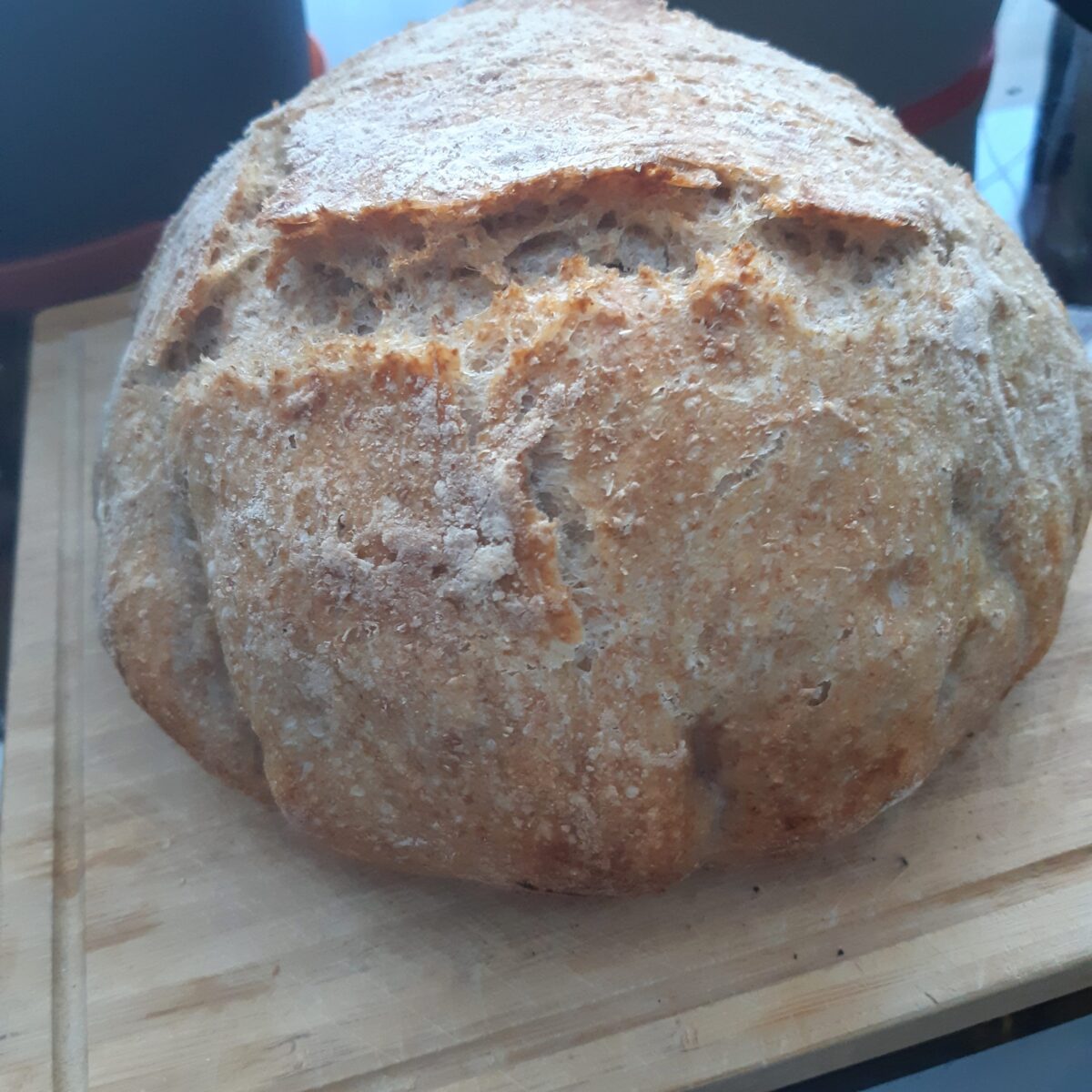
Since the first time was a success, I thought about other types of bread — especially sourdough. I wanted to try making sourdough bread because all you need is flour and water. There was no use for yeast, since you are making your own through the sourdough starter.
So, with a brave heart and some confidence, I made my first sourdough starter.
The process involves feeding the mixture with flour and water to make sure the yeast is still alive. That sounds simple enough, I thought. Let’s give it a try!
It died.
I hadn’t fed it enough. Since it was not rising, I thought the yeast needed longer to interact with the flour.
After almost a year of making sourdough bread, it’s become a passion. There is something magical about mixing flour, water and a bit of salt to make something light and fluffy and full of flavour.
I discovered that sourdough starter is tricky. It will look like a lump of flour and water with no activity for days, but you still need to feed it. When an active yeast culture has been established in it, it will start to bubble and rise.
I did not give up after my first failed attempt. After a couple of months, I tried again.
And I failed again.
Both these attempts went down the sink. Still, I was determined to make a successful sourdough starter.
As the saying goes, the third time’s a charm! My third attempt succeeded and I’m still using it to produce fresh loaves of sourdough bread. I named her Bubbles, and she lives mostly in my fridge.
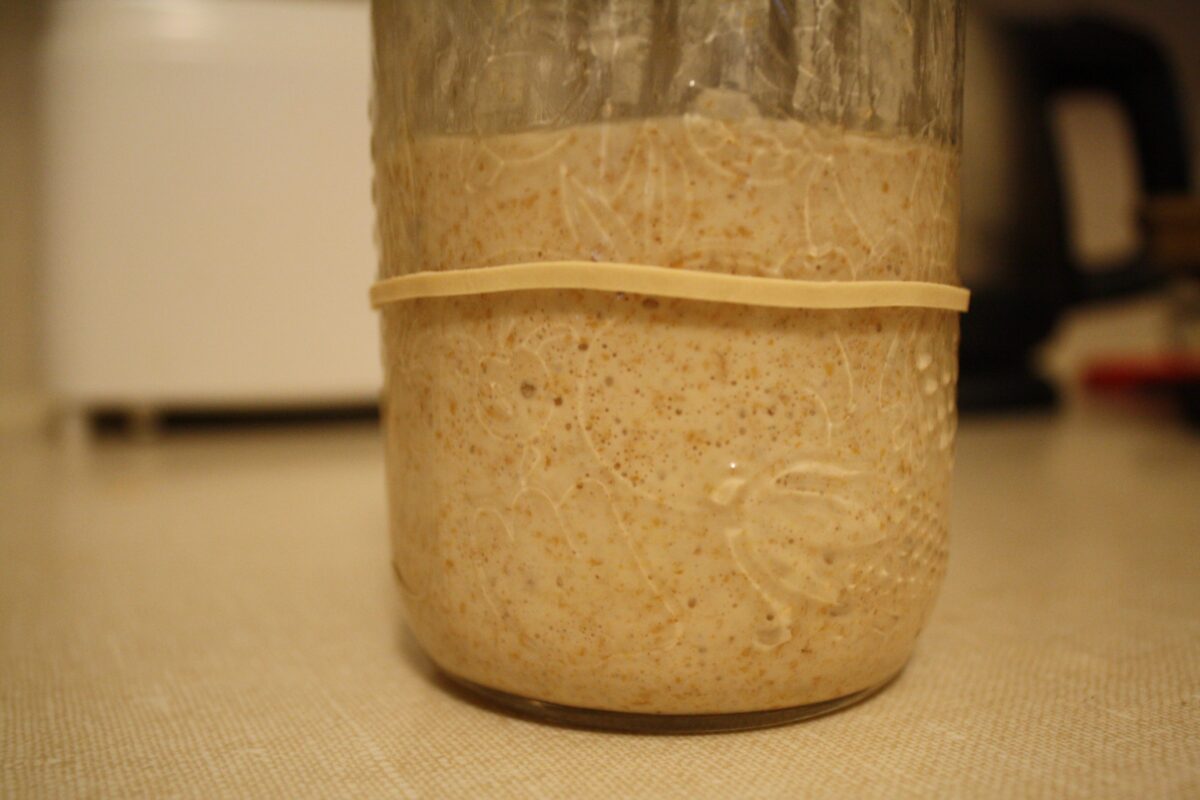
After almost a year of making sourdough bread, it’s become a passion. There is something magical about mixing flour, water and a bit of salt to make something light and fluffy and full of flavour.
Success can still be elusive. My bread doesn’t always end up being fluffy on the inside. There are times when it is too dense, other times when it rises beautifully. The most important thing for me has been the learning the process and not getting discouraged.
I don’t own a scale, so I use cups for measurements. These can be somewhat inaccurate, so I use my hands to guess if I need more flour or water. The temperature can also affect the outcome of the bread, so when it’s colder, it will take longer to rise before baking.
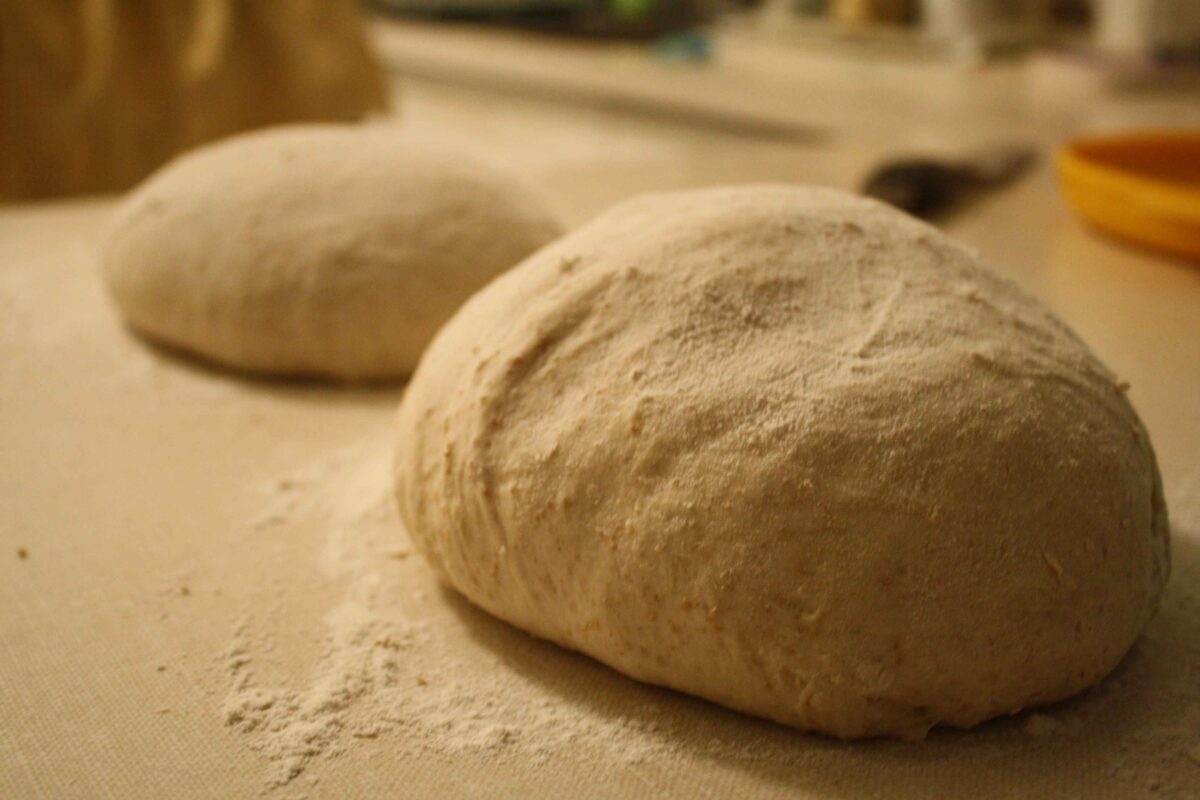
All of these things can change how the bread turns out, so I try my best to adjust for them. The flavour is, for me, the most important thing. Sourdough bread feels lighter in the stomach, unlike store-bought sandwich bread. This is because the yeast in the starter makes the gluten easier to digest.
Bread-making has taught me a lot of things. Mainly, it taught me patience. Making sourdough bread takes a very, very long time. A fresh loaf takes me about two days to make, including baking and resting time. And in between the resting time, you have to fold the dough on itself about 4 times, with 30 minutes in between each fold.
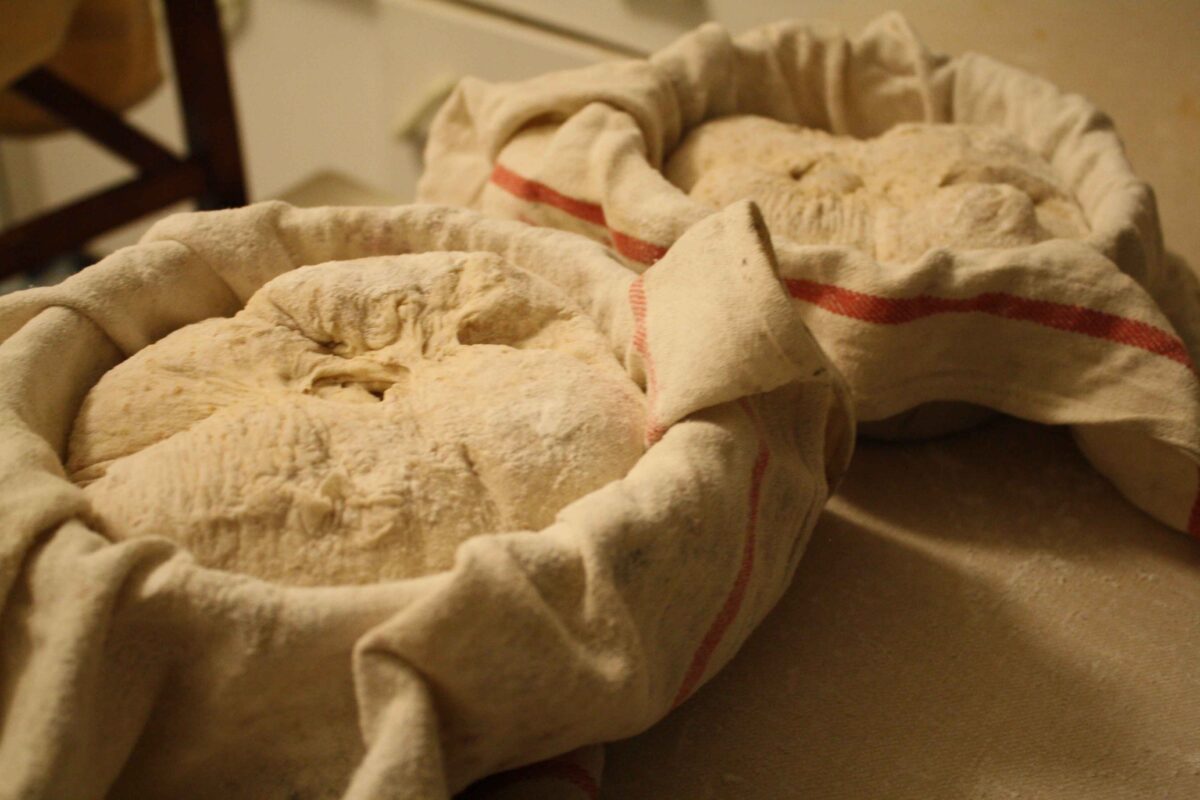
Despite this, the product is always worth it. It’s the small things that make the bread so good. This is something else my new passion has taught me: small things add up to make something great.
Bread-making is truly a magical experience. There is a sense of achievement when you take the bread out of the oven, and it has sprung up with a dark brown crust. All these hours of waiting and doing the same thing over and over lead to this beautiful loaf of bread that will trump any store-bought one, mainly because you’ve made yourself.
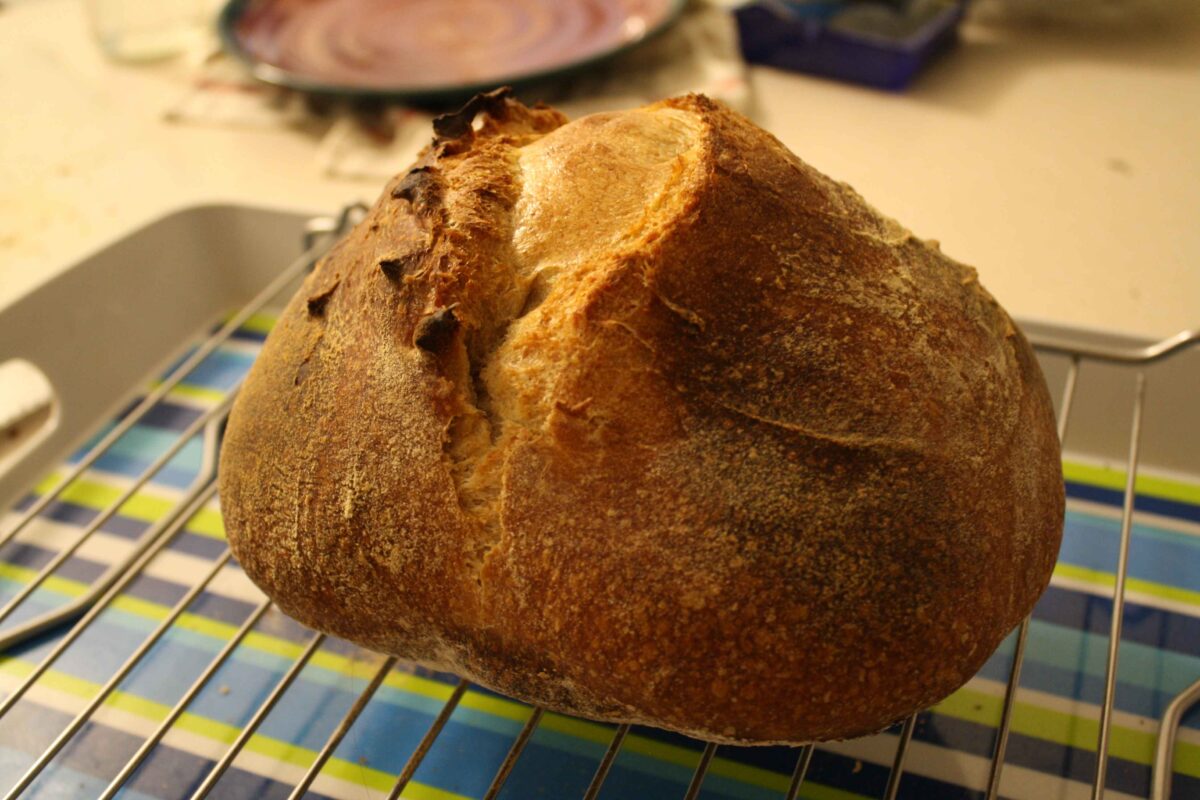
I have continued baking since pandemic restrictions eased, but not as often. Baking still brings me a kind of peace and satisfaction, unlike anything else. It comes from the kneading of the dough, the mixing of it with your hands. It comes from letting it rest, and then seeing the result. It’s the patience, the little steps that lead to magnificent results.
My sourdough success has me looking ahead to other challenges.
Next up: baguettes and ciabatta.

